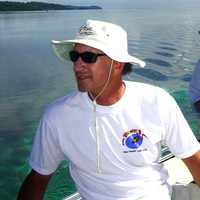Research Interests:
Research Interests:
Coral communities were monitored at Pandora Reef, nearshore Great Barrier Reef from 1981 to 2005 using photography and videography. In the 1980s, regional elevation of land-based nutrients in coastal waters (ca. 2–6 times pre-European... more
Coral communities were monitored at Pandora Reef, nearshore Great Barrier Reef from 1981 to 2005 using photography and videography. In the 1980s, regional elevation of land-based nutrients in coastal waters (ca. 2–6 times pre-European levels of early 1800s) did not prevent overall recovery of coral cover and diversity following a sequence of environmental disturbances in the 1970s. However, prospects for a repeat of such resilience following catastrophic mortality from high-temperature bleaching in 1998 and a cyclone in 2000 are not clear. Different coral communities around the reef varied greatly in relation to impacts and recovery. Fore-reef communities dominated by acroporids (fast growing branching and tabular Acropora and foliose Montipora) recovered strongly in the 1980s following apparently severe impacts by cyclone, flood and heat wave disturbances in the 1970s, attaining 60–90% cover by stabilizing rubble and outgrowing macro-algae in <10 years. In the back-reef, by contrast, poritid-dominated communities (massive and finger Porites and columnar Goniopora and Alveopora) had more stable trajectories and smaller impact from recent disturbances: recovery was well underway in 2005. The contrasting trajectories of different parts of the reef reflect differential survival of more persistent versus more ephemeral taxa, notably poritids and acroporids, respectively, both major contributors to framework and cover on reefs globally. A repeat of earlier resilience appears possible in the shallow fore-reef, but unlikely in the deeper fore-reef, which had few viable fragments or recruits in 2005. The main limits on recovery may be (1) reduced supply of coral larvae due to widespread regional losses of coral brood stock and (2) the reduced intervals between disturbances associated with global climate change. The presence of a high abundance of Acroporidae is a major pre-disposing risk factor for climate change impacts.
Research Interests:
Three new species of Astreopora (Hexacorallia: Scleractinia: Acroporidae), from Cenderawasih Bay in West Papua, exhibit morphological innovations for this conservative genus, extant since the Cretaceous. Two species are fully branching, a... more
Three new species of Astreopora (Hexacorallia: Scleractinia: Acroporidae), from Cenderawasih Bay in West Papua, exhibit morphological innovations for this conservative genus, extant since the Cretaceous. Two species are fully branching, a condition never previously described for Astreopora: Astreopora cenderawasih sp. nov. has dendritic branching, also seen in the confamilial genus Montipora, whereas branches of A. acroporina sp. nov. possess an axial corallite, regarded as the key morphological innovation facilitating rapid diversification and dominance of reefs in the younger, confamilial and most diverse genus Acropora (staghorn corals). We propose that these novel characters may be parallelisms indicating deep familial homologies. The third species, Astreopora montiporina sp. nov., has expansive coenosteum, reminiscent of plating Montipora. The new species form part of the most species-rich Astreopora assemblage reported to date, comprising 14 species. The unique tectonic and eustatic history of Cenderawasih Bay may have played a role in the evolution of these new species.
